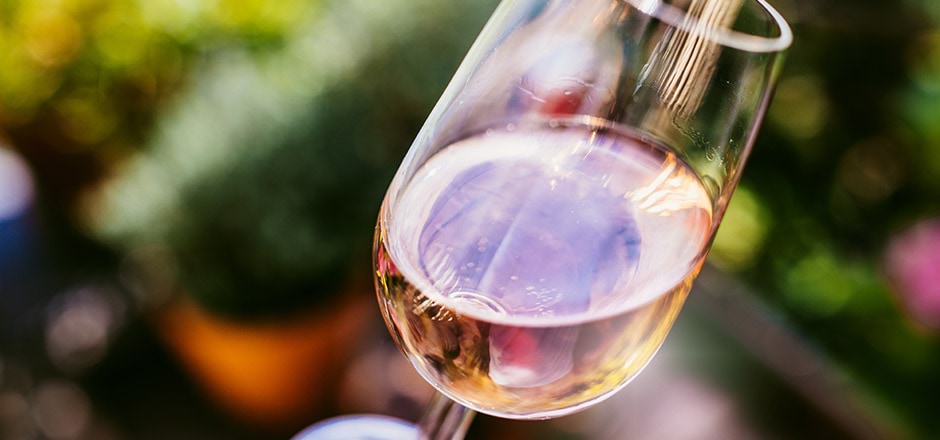- Ask the Experts
Your ultimate prosecco guide
Before you pop open a bottle of bubbles on National Prosecco Day, here is everything you need to know about Italy’s national sparkling wine.

You’re probably no stranger to prosecco – these days the wine is a go-to when it comes to toasting to a special occasion, and it’s the MVP ingredient when it comes to creating that crowd-pleasing cocktail, the spritz. But while you may have sipped your fair share of prosecco in your time, just how well do you know this sparkling wine? With National Prosecco Day making its return on August 13, it’s a good time to get to know this much-loved drink a little better. Here are the basics about where prosecco comes from, what it tastes like, and what to serve it with, along with some great buys to try now.
Where does prosecco come from?
North-eastern Italy can lay claim to prosecco. But if we’re talking specifics when it comes to where prosecco comes from, its birthplace is found in the Veneto and Friuli-Venezia Giulia regions. This is where the glera grape originates, the grape that forms the base of prosecco wine. Interestingly, the glera grape was once known as the prosecco grape, but its name was changed to avoid confusion with the wine.
What’s the difference between prosecco and Champagne?
While we love to drink them both, there are plenty of differences between prosecco and Champagne as they’re not (as some may think) simply different names for the same drink. French Champagne is made from a variety of grapes (chardonnay, pinot noir and pinot meunier) from a specific region in France. But what about prosecco? The Italian drink is instead based around the single glera grape, giving both drinks completely different flavours. Prosecco and Champagne also embrace different methods of creation. Prosecco uses the Charmat method, which means that after grape harvesting, crushing, and initial fermentation, its second fermentation (which creates the bubbles) takes place in a stainless steel tank (instead of the bottle), whereas Champagne’s second fermentation happens in the bottle.
What food goes well with prosecco?
While prosecco is a key player in Aperol Spritz recipes, this Italian-style drop pairs well with food. Keep in mind that the flavour of prosecco can vary from wine to wine, ranging from quite sweet to quite dry. But with its high acidity and natural sweetness, prosecco is best partnered with acidic, sweet, fatty and salty flavours in food.
Seafood and prosecco have long gone steady, with the citrus tones of the wine the perfect partner in crime to the likes of oysters, prawns, lobster and fish. Given its Italian heritage, it’s no surprise that prosecco and pizza are thought to be a match made in heaven. The crisp acidity present in the sparkling wine cuts through rich toppings like tomato and creamy layers of cheese.
What’s the best way to serve prosecco?
Like any sparkling wine, prosecco should be served chilled, at between 6-8 degrees Celsius. While Champagne is generally left to sit for a bit to warm up before pouring, the same rules don’t apply to prosecco – it’s best sipped crisp and fresh, immediately after the bottle is opened. And don’t worry about holding on to it for a special occasion – prosecco doesn’t share the same preservatives as its French cousin Champagne, so aim to drink it within its first year.
Our top prosecco picks
Stock up on these great-value proseccos, including Italian and Aussie-made wines.
The Trip Prosecco Affordable is an understatement when it comes to this Aussie-made prosecco which you can pick up for less than $15 a bottle. While it’s a cost-effective option for any celebration, it’s also a delicious one, with the fizzy drop rich in the flavours of citrus and friends – think lemon, honeydew and green grapes. The perfect partner to an antipasto plate.
Yarra Burn YB Prosecco Equally affordable is this fellow Australian prosecco from Yarra Burn. You can expect great things from this sparkling wine, thanks to it being created by Australia’s most awarded sparkling winemaker, Ed Carr. Fruity and upfront, the wine is a celebration of fruit and florals, featuring the aromas of pear and white peach.
Sensi 18K Organic Prosecco A mid-tier market offering, the Sensi Prosecco is less sweet, more zesty in its tone. The definition of light and fresh, the drink sees the flavours of grapefruit and lemon mingle with green apple and quince. Easy drinking in a nutshell.
- Also in Ask the Experts
- View More Post Ask the Experts



